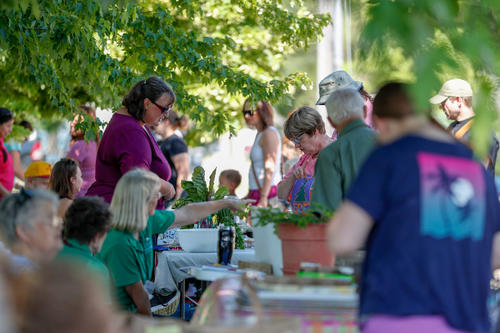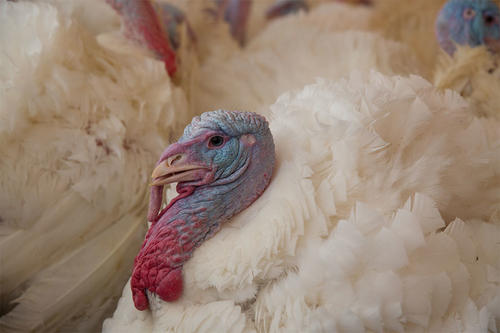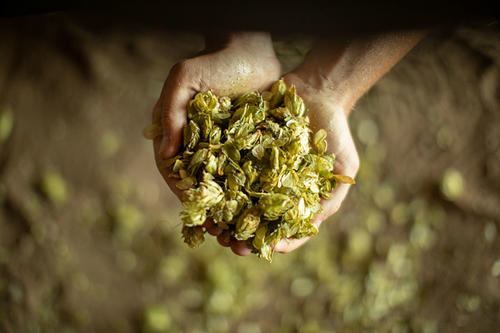First Kiss: The latest U of M apple to savor
The University of Minnesota's world-renowned apple breeding program has delivered another success with the release of the very memorable First Kiss.
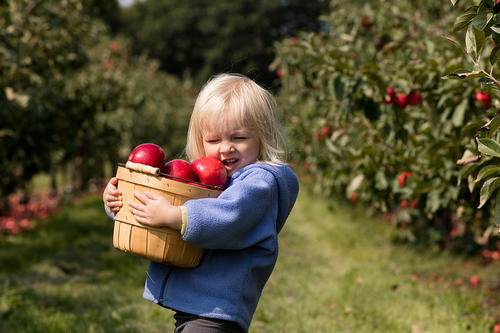
Nearly 30 years after introducing the Honeycrisp—the variety that rocked the staid and stale apple world—U of M apple breeders Jim Luby and David Bedford remain dedicated to their craft, which blends science, persistence, and intuition.
And they continue to develop apple varieties that are magnificent in both texture and flavor—ones that orchards profit from and consumers crave.
The latest release is the First Kiss (known as Rave when grown outside of Minnesota). Not only does it have the same texture as the Honeycrisp (along with a flavor that’s more tart and tangy), it stores well and is ready to harvest in mid- to late-August making it an early bird for Minnesota apples.
First Kiss is a cross between the Honeycrisp and a variety from Arkansas known as AA44. It hit the market in the summer of 2018 to rave reviews, so to speak, and perhaps the only downside is that it will take apple growers a few years to catch up to demand.
First Kiss/Rave is the 27th variety to be released by the U of M’s apple breeding program, which has rocketed to prominence by focusing on cold-hardiness and unsurpassed texture.
The Honeycrisp, released in 1991, is already the fifth most produced apple in the United States and second in terms of retail value, says Luby, a professor in the Department of Horticultural Science and longtime director of the U of M’s fruit breeding programs. That was followed by SweeTango, another tasty commercial success.
“Those two have done very well to get to where they are, and Honeycrisp just continues to go up,” notes Bedford, a senior research fellow at the U of M’s Horticultural Research Center. “People really are willing to pay a good price for an apple that is sometimes more than twice the price of Red Delicious. So we’re happy to be in that rarified air.”
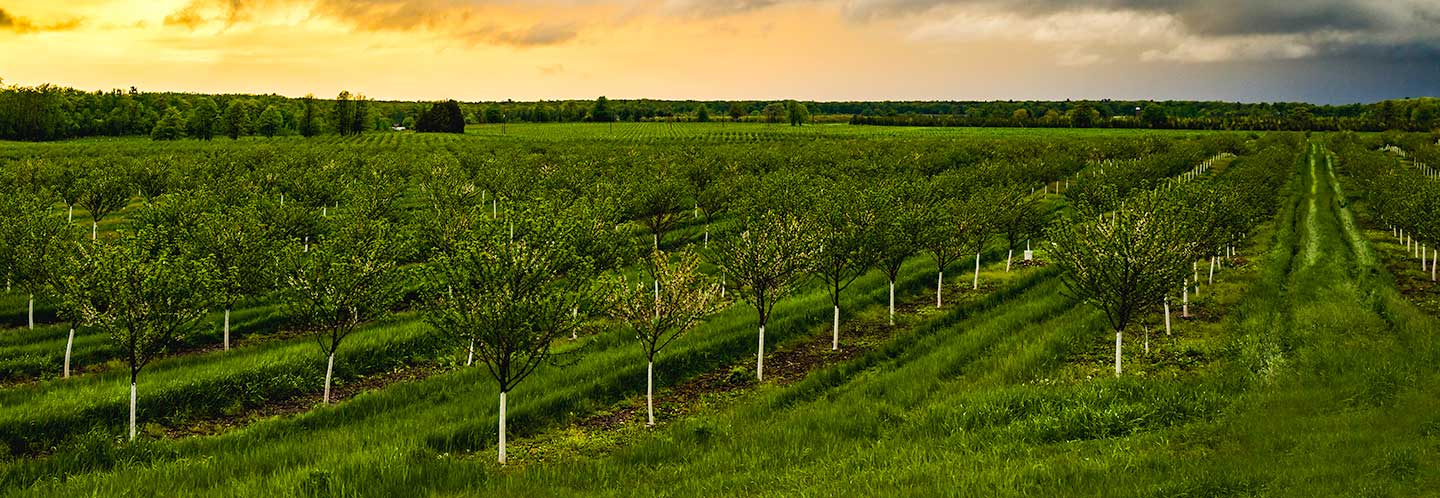
Fans in the orchard business
On a gorgeous mid-August morning, a day perfect for apple ripening, John Jacobson drove a visitor to a stand of three apple trees at Pine Tree Apple Orchard near White Bear Lake, MN—the family-run business he’s been at since 1972. Jacobson recalls the day almost nine years ago when those test trees were a revelation.
“What is this apple here? Look at how red it is!,” he recalls exclaiming when he came upon them. He called Bedford, who confirmed that the apples were MN1955, later to be named First Kiss/Rave.
“It was an aha moment,” beams Jacobson, so he essentially told Bedford to hurry up and release the variety. When that happened five years later, Pine Tree Orchard purchased 3,000 trees—1,500 each for its nurseries in White Bear Lake and in Preston, MN—and plans to plant 2,000 more First Kiss trees next year.
Jacobson brought an early crop of First Kiss apples to the Minnesota State Fair in 2018 and 2019, and amidst a big wave of publicity last year they sold out in the blink of an eye. He’s looking forward to helping meet Minnesotans’ demand, and notes that the First Kiss could even mean an earlier opening for his orchard.
“When you’re tasting 500 or 600 apples a day it’s definitely not for recreation, I can tell you that. The first couple hundred are kind of fun but after that it gets to be real work, for sure.”David Bedford
He describes how the last three U of M apple releases dovetail to cover the desires of consumers.
“With those three varieties—Honeycrisp, SweeTango, and then First Kiss—it’s really been the game changer,” he says. “They’re juicy, they’re crunchy, they’re sweet, they’re tart. Plus, they’ve been spread out throughout the growing season, so it’s First Kiss, SweeTango, then Honeycrisp. And that’s just giving us this great product line that we can offer the consumers so that they can get a really good, consistent eating experience all through the year.”
An apple to be named later
That endorsement is certainly music to Luby and Bedford’s ears, and the prospect of even better apples spread throughout the season keeps them busy testing and tasting (see video) for the next great apple.
But it’s painstaking and time-consuming work, and Bedford notes that only about 1 in 10,000 seedlings that they develop from breeding is good enough to make it all the way to release. “So it’s really a constant winnowing process,” he says. “And when we’re done, there’s that one diamond that was in the center of that ton of gravel. It just took us a while to weed through and get to it.”
{"preview_thumbnail":"/sites/twin-cities.umn.edu/files/styles/video_embed_wysiwyg_preview/public/video_thumbnails/XBVYZT8CZeA.jpg?itok=gaaauoiR","video_url":"https://youtu.be/XBVYZT8CZeA","settings":{"responsive":1,"width":"854","height":"480","autoplay":0},"settings_summary":["Embedded Video (Responsive)."]}
Now that the early part of the season has more options, there are other traits to fine tune. Bedford says there are nearly a dozen different goals—characteristics to breed for—including earliness to market, extended storage life, and, of course, good flavor.
Tweaking flavor holds some interesting possibilities. For example, the U of M’s Sweet Sixteen apple, when grown right, “actually tastes like a cherry Lifesaver,” Bedford says.
“So that’s the next frontier,” he adds. “We haven’t cracked that yet, but that’s one of the things we’re hoping to improve all the time, all while keeping that Honeycrisp texture that’s become our benchmark. We’ve got plenty to work on.”
While they do, they have the satisfaction of knowing that their work really does matter—in Minnesota and around the globe. They’ve heard from many growers that without the profits from Honeycrisp their orchards would have gone bankrupt.
And the “overwhelmingly positive” feedback has included some fun stories, like from the man who told Bedford he once casually gave an airline gate attendant a SweeTango apple before boarding a plane. About 10 minutes later he was summoned over the intercom to return to the gate for no apparent reason. The gate attendant explained. “What was the name of that apple you gave me? I have to have more!”
“For many years it seemed like we were out of step. The rest of the world was going on with their big Red Delicious that tastes like sawdust with a skin on it but no texture, no flavor. … And then boom, we released Honeycrisp and people began to say, ‘Oh my gosh, that’s what we’ve been missing.’ So it’s really revolutionized things. It’s raised the bar.“David Bedford
“We have pretty special jobs,” says Bedford. “I mean, the University is a great place to work, and I think apples really can touch just about everybody. You can eat our technology; you can enjoy our technology. We’re really pretty blessed to be in that position.”
Adds Luby: “Our apples can be in every refrigerator in the state. And that’s a little bit of the University in each home.”
First Kiss, Rave, and SweeTango are registered trademarks of the University of Minnesota.
- Categories:
- Agriculture and Environment
Meet the people behind the story
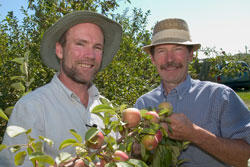
Jim Luby (left)
Professor, Department of Horticulture Science
David Bedford (right)
Senior research fellow, Department of Horticulture Science, Horticultural Research Center
